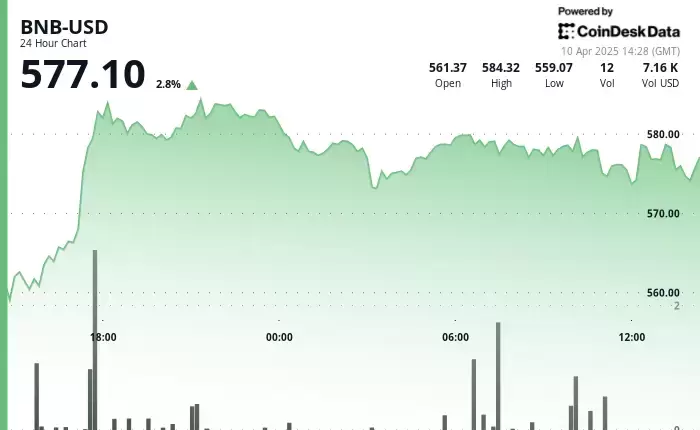 |
|
 |
|
 |
|
 |
|
 |
|
 |
|
 |
|
 |
|
 |
|
 |
|
 |
|
 |
|
 |
|
 |
|
 |
|
最近の研究論文は、それがもう少し複雑であることを示唆しています。残念ながら、バイアスは単なるバグではありません。適切な暗号ガードレールがない永続的な機能です。
Can you trust your AI to be unbiased? A recent research paper suggests it’s a little more complicated.
あなたはあなたのAIが公平であると信頼することができますか?最近の研究論文は、それがもう少し複雑であることを示唆しています。
Unfortunately, bias isn’t just a bug — it’s a persistent feature without proper cryptographic guardrails. A September 2024 study from Imperial College London shows how zero-knowledge proofs (ZKPs) can help companies verify that their machine learning (ML) models treat all demographic groups equally while still keeping model details and user data private.
残念ながら、バイアスは単なるバグではありません。適切な暗号ガードレールがない永続的な機能です。 Imperial College Londonの2024年9月の調査では、ゼロ知識証明(ZKPS)が、モデルの詳細とユーザーデータをプライベートに保ちながら、機械学習(ML)モデルがすべての人口統計グループを等しく扱うことを企業がどのように役立つかを示しています。
We recently covered how ZKPs are being used to detect fraud and anomalies in financial transactions. But in this case, ZKPs can be applied to verify the fairness property of ML models.
最近、ZKPが金融取引の詐欺と異常を検出するためにどのように使用されているかを取り上げました。ただし、この場合、ZKPを適用して、MLモデルの公平性プロパティを検証できます。
When discussing "fairness," we're entering a complicated area. There are several mathematical definitions of fairness, and the preferred definition shifts with the political landscape. For instance, consider the US government's approach to fairness over the past two administrations.
「公平性」について議論するとき、私たちは複雑な領域に入ります。公平性にはいくつかの数学的定義があり、好ましい定義は政治的景観とともに変化します。たとえば、過去2つの行政における米国政府の公平性へのアプローチを検討してください。
The previous administration was focused on diversity, equity and inclusion. They used demographic parity as a key measure of fairness, aiming to ensure the output probability of a specific prediction is the same across different groups.
前の政権は、多様性、公平性、包摂に焦点を合わせていました。彼らは、特定の予測の出力確率が異なるグループ間で同じであることを保証することを目指して、人口統計のパリティを公平性の重要な尺度として使用しました。
But as we integrate more ML models into critical systems like college admissions, home loans and future job prospects, we could use a little more reassurance that AI is treating us fairly.
しかし、より多くのMLモデルを大学入学、住宅ローン、将来の雇用の見通しなどの重要なシステムに統合するにつれて、AIが私たちを公平に扱っていることをもう少し安心することができます。
We need to be sure that any attestations of fairness keep the underlying ML models and training data confidential. They need to protect intellectual property and users’ privacy while providing enough access for users to know that their model is not discriminatory. Not an easy task.
公平性の証明は、基礎となるMLモデルとトレーニングデータを秘密にしておくことを確認する必要があります。知的財産とユーザーのプライバシーを保護しながら、ユーザーが自分のモデルが差別的ではないことを知るのに十分なアクセスを提供する必要があります。簡単な作業ではありません。
Enter, zero-knowledge proofs.
入力、ゼロ知識の証明。
ZKML (zero knowledge machine learning) is how we use zero-knowledge proofs to verify that an ML model is what it says on the box. ZKML combines zero-knowledge cryptography with machine learning to create systems that can verify AI properties without exposing the underlying models or data. We can also take that concept and use ZKPs to identify ML models that treat everyone equally and fairly.
ZKML(ゼロナレッジマシンラーニング)は、ゼロ知識証明を使用して、MLモデルがボックスに表示されていることを確認する方法です。 ZKMLは、ゼロ知識の暗号と機械学習を組み合わせて、基礎となるモデルやデータを公開せずにAIプロパティを検証できるシステムを作成します。また、その概念を採用し、ZKPSを使用して、すべての人を平等かつ公正に扱うMLモデルを特定することもできます。
Recently, we covered how ZKPs were becoming more efficient to perform at scale. Previously, using ZKPs to prove AI fairness was extremely limited because it could only focus on one phase of the ML pipeline. This made it possible for dishonest model providers to construct data sets that would satisfy the fairness requirements, even if the model failed to do so. The ZKPs would also introduce unrealistic computational demands and long wait times to produce proofs of fairness.
最近、ZKPが大規模なパフォーマンスにより効率的になっていることを取り上げました。以前は、ZKPSを使用してAIの公平性を証明することは、MLパイプラインの1つのフェーズにのみ焦点を合わせることができるため、非常に限られていました。これにより、不正なモデルプロバイダーは、モデルがそうしなかったとしても、公平性要件を満たすデータセットを構築することが可能になりました。 ZKPはまた、非現実的な計算需要と、公平性の証拠を生み出すための長い待ち時間を導入します。
But in recent months, ZK frameworks have become more efficient to scale ZKPs to be able to perform synthesis tasks like quickly generating diverse pieces of content or merging large amounts of data. This makes it possible to integrate ZKPs to detect fraud or anomalies in financial transactions, which is a critical step toward large-scale adoption.
しかし、ここ数ヶ月で、ZKフレームワークは、ZKPをスケーリングして、多様なコンテンツを迅速に生成したり、大量のデータを融合したりするなどの合成タスクを実行できるようにするためにより効率的になりました。これにより、ZKPを統合して金融取引の詐欺や異常を検出できます。これは、大規模な採用に向けた重要なステップです。
So how do we measure whether an AI is fair? Let's break down three of the most common group fairness definitions:
では、AIが公正かどうかをどのように測定しますか?最も一般的なグループの公平性の定義の3つを分解しましょう。
* Demographic parity
*人口統計パリティ
* Equality of opportunity
*機会の平等
* Predictive equality
*予測的平等
As we mentioned, diversity, equity and inclusion departments often use demographic parity as a measurement to attempt to reflect the demographics of a population in a company's workforce. It's not the ideal fairness metric for ML models because it's used to measure the probability of a specific prediction. For example, we wouldn't necessarily expect that every group will have the same outcomes.
私たちが述べたように、多様性、公平性、包括的部門は、企業の労働力の人口の人口統計を反映しようとする測定として人口統計のパリティを使用していることがよくあります。 MLモデルにとって理想的な公平性メトリックではありません。これは、特定の予測の確率を測定するために使用されるためです。たとえば、すべてのグループが同じ結果を得ることを必ずしも期待していません。
Equality of opportunity is easy for most people to understand. It gives every group the same chance to have a positive outcome, assuming they are equally qualified. For instance, it is not optimizing for outcomes — only that every demographic should have the same opportunity to get a job or a home loan.
機会の平等は、ほとんどの人が理解するのが簡単です。それは、それらが等しく資格があると仮定して、すべてのグループに肯定的な結果をもたらすのと同じ機会を与えます。たとえば、結果に最適化するものではありません。すべての人口統計には、仕事や住宅ローンを得るのと同じ機会があるはずです。
Likewise, predictive equality measures if an ML model makes predictions with the same accuracy across various demographics, so no one is penalized simply for being part of a group. So in both cases, the ML model is not putting its thumb on the scale for equity reasons but only to ensure that groups are not being systematically discriminated against in any way. And that is an eminently sensible fix.
同様に、MLモデルがさまざまな人口統計で同じ精度で予測を行う場合、予測平等測定では、単にグループの一部であるために誰も罰せられません。したがって、どちらの場合も、MLモデルは、株式上の理由で親指をスケールに置くのではなく、グループがいかなる方法でも体系的に差別されていないことを保証するためだけです。そして、それは非常に賢明な修正です。
Over the past year, the US government and other countries have issued statements and mandates around AI fairness and protecting the public from ML bias. Now, with a new administration in the US, there will likely be a different approach to AI fairness, shifting the focus back to equality of opportunity and away from equity.
過去1年間、米国政府と他の国は、AI公平性に関する声明と委任を発表し、MLバイアスから一般の人々を保護してきました。現在、米国の新規政権により、AI公平性に対する別のアプローチがある可能性が高く、機会の平等と公平性から離れて焦点をシフトします。
As political landscapes change, so do the definitions of fairness in AI, moving between those focused on equity and those focused on opportunity. We are proponents of ML models that treat everyone equally without needing to put a thumb on the scale. And ZKPs can serve as an airtight way to verify that ML models are doing this without revealing private data.
政治的景観が変化するにつれて、AIの公平性の定義も同様に、公平性に焦点を当てた人々と機会に焦点を当てた人々との間を移動します。私たちは、親指をスケールに置く必要なく、すべての人を平等に扱うMLモデルの支持者です。また、ZKPは、MLモデルがプライベートデータを表示せずにこれを実行していることを確認するための気密の方法として機能します。
While ZKPs have faced plenty of scalability challenges over the years, the technology is finally becoming more affordable for mainstream use cases. We can use ZKPs to verify training data integrity, protect privacy, and ensure the models we’re using are what they say they are.
ZKPは長年にわたって多くのスケーラビリティの課題に直面してきましたが、この技術は最終的に主流のユースケースでより手頃な価格になりつつあります。 ZKPSを使用して、トレーニングデータの整合性を検証し、プライバシーを保護し、使用しているモデルが彼らが言うものであることを確認できます。
免責事項:info@kdj.com
提供される情報は取引に関するアドバイスではありません。 kdj.com は、この記事で提供される情報に基づいて行われた投資に対して一切の責任を負いません。暗号通貨は変動性が高いため、十分な調査を行った上で慎重に投資することを強くお勧めします。
このウェブサイトで使用されているコンテンツが著作権を侵害していると思われる場合は、直ちに当社 (info@kdj.com) までご連絡ください。速やかに削除させていただきます。

















![Super Mario World Koopa Troopa 100%96⭐️ + Coin [Ao Vivo] Super Mario World Koopa Troopa 100%96⭐️ + Coin [Ao Vivo]](/uploads/2025/04/10/cryptocurrencies-news/videos/super-mario-koopa-troopa-coin-ao-vivo/image-1.webp)










































